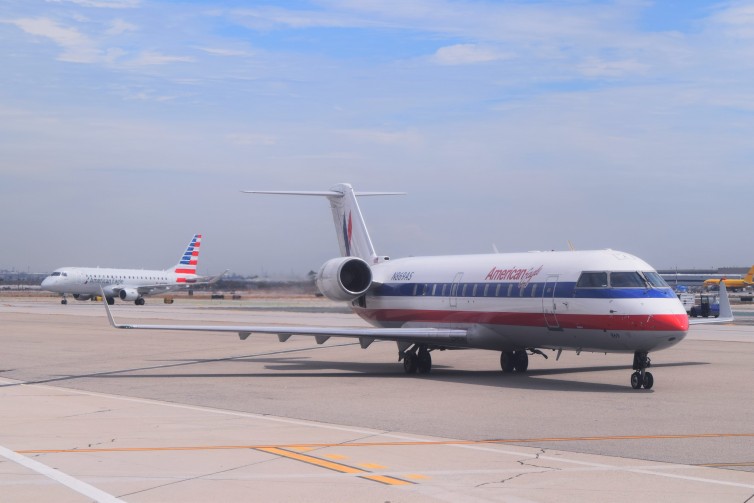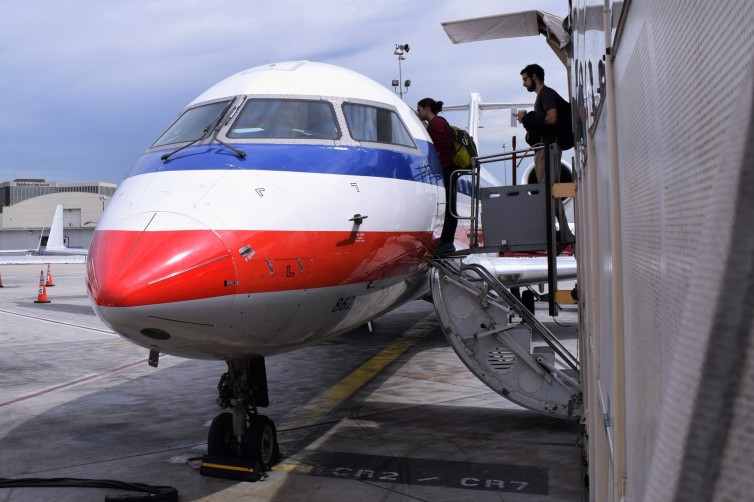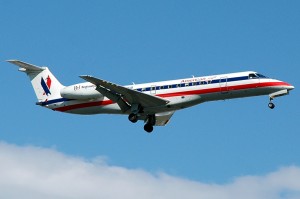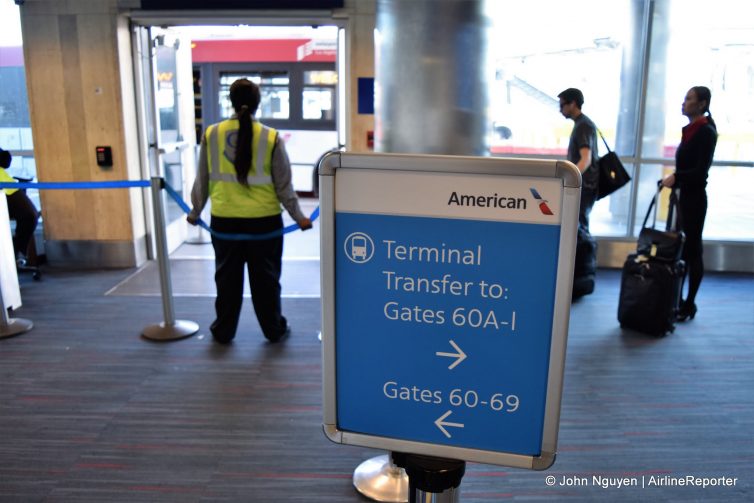On May 16, American unveiled a series of operational and visual updates at Los Angeles International Airport (LAX) in an attempt to better streamline passenger flow and optimize capacity ahead of the summer travel season. From gate renumbering to new signage, the changes were implemented overnight, in time for the busy Monday morning rush. While there was no media announcement, AirlineReporter was invited to see the changes for ourselves. With AA being spread over two separate terminals and undertaking a large expansion at breakneck speed, something had to be done. Here’s what you need to know’¦
Browsing Tag: American Eagle

An American Eagle CRJ200 taxiing at LAX, with an Embraer 175 following – Photo: John Nguyen | AirlineReporter
Let’s face it… the 50-seat Bombardier CRJ200 isn’t very popular. At all. You’ll find countless articles and blogs about how much flyers dread flying in it, and how all-around terrible the experience was. Complaints were numerous: claustrophobic cabin, tiny overhead bins that fit only the smallest of carry-on bags, no first class, inoperable lavatories, and so on. This wasn’t limited to just one airline either; CR2s are found in the regional fleets for most of the major U.S. airlines. Coincidentally, many of them are operated under contract by the same regional carrier, SkyWest Airlines.
Does the CR2 deserve its bum rap? Maybe, maybe not (but probably). For some passengers, however, there is hope just over the horizon…

An American Eagle CRJ-200 during boarding at LAX – Photo: John Nguyen | AirlineReporter
Occasionally, I’ll be as lucky as some of my AirlineReporter colleagues to be flying high in a premium cabin while being waited on hand and foot (see, e.g., David Delagarza’s vacation flight in first-class on ANA, or Jacob’s Pfledger’s mile-high shower on Emirates). But as most of us can attest to, sometimes (or most of the time) we have to schlep it to get to where we want to go.
My wife and I traveled to Europe for a two-week whirlwind honeymoon tour that included 10 cities in eight countries, as well as eight individual flights within Europe. We found a smashing deal from Delta to experience premium economy on Air France’s Airbus A380 to Paris. There was just one slight issue: our Air France flight took off from San Francisco, but we live in Southern California — over 350 miles away. The solution: flying in the much-maligned CRJ-200. What sort of life decisions did I get wrong to lead me to suffering this mighty indignity?

An American Eagle ERJ-135
First off, let me say that being an airline pilot is not an easy job. It is very complex, a lot can go wrong and regional pilots are not paid to the level of their talent. However, a few bad apples can make pilots seem unprofessional, which is far from the truth.
That said, none of them should be making such a careless mistake. They go through a lot of training to prepare to handle a difficult situation and more importantly, make sure things don’t go wrong. Each time they fly they hold many lives in their hands.
The Wall Street Journal highlighted two recent incidents of pilots on commuter airlines forgetting to start their second engine during take off. No one was hurt and the takeoffs were successfully aborted, but forgetting to have your engines turned on it is a huge oversight.
Airlines usually use one engine during taxi to conserve on fuel. However, written and verbal checklists (not to mention common sense) ensures that pilots are prepared for takeoff (ie using both engines).
In one case, a pilot for an American Eagle regional jet was flying from Los Angeles to San Diego. He got distracted talking to the control tower and assumed he started the second engine. When trying to take off, he received an automated warning showing the second engine wasn’t to speed and they headed back to the gate. They thought the engine was malfunctioning until mechanics found it was never started (now that’s embarrassing).
American Eagle states the pilots went though additional training and updated their takeoff checklist. Really? I am not quite sure how the updated checklist would help. “Before take off, be sure both engines are running. We REALLY mean it, double check. Did you check? For both? Ready for takeoff? Actually just check one more time to be sure.”
The second incident happened with another regional jet flying for Trans States Airlines (which flies for United and US Airways) at Dulles International Airport. Again the pilot didn’t realize his second engine wasn’t started until they were lined up for takeoff and at full throttle.
Wanting an inside perspective I spoke with a regional jet pilot (who wanted to remain anonymous). She told me, “It’s sad that airlines, in general, are still experiencing a lack of safety issues. We should be more paranoid now than ever before about checklists and procedures. To miss something so crucial is unacceptable. Not all pilots are like this but without a serious change in the industry (ie supporting pilots) stupid mistakes will continue to occur. For the most part, pilots are very safety conscious and overly cautious of everything.”
These recent incidents have raised questions (once again) about commuter carriers. Many people say they are over worked and under paid. But regional jets provide airlines a lower overhead and provide you, the customer, a cheaper ticket.
I don’t know about you, but I am more than willing to pay a few bucks more to make sure airlines hire and keep highly trained and motivated pilots that do not need to be abused to earn their seniority.
Image: caribb